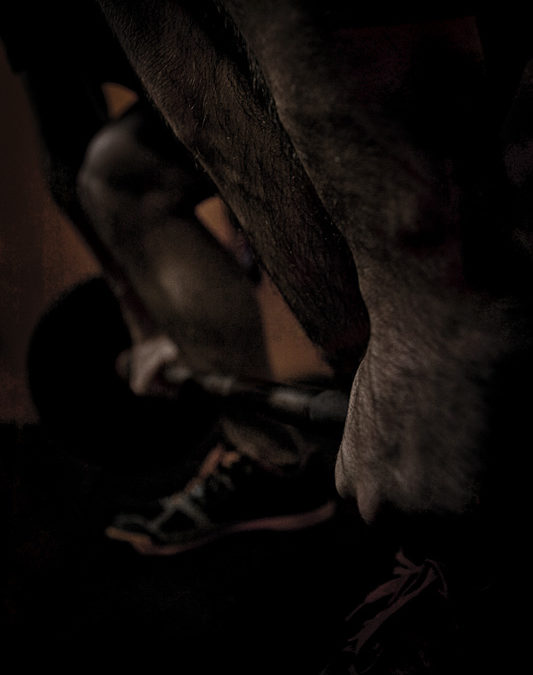What is the Hook Grip?
When you place your hands on the barbell, a hook grip is when you wrap your thumbs around first and then as many fingers as will fit over your thumb. I am a woman with big hands and long fingers and can get all 4 fingers around the women’s bar and my thumb, but am most comfortable with 2 fingers wrapped over my thumb.
Why Use the Hook Grip?
As the bar gets heavier and the movement gets faster, you’ll want to be sure you have a firm grip on that barbell so you don’t lose it. Chalk can help, but when you think about the power needed for an explosive lift like a clean or a snatch, you’re going to want to make sure you have a very secure grip on that barbell. You don’t want that barbell to go flying out of your hands!
When to Use the Hook Grip?
Olympic Lifts and power movements that are derived from the Olympic Lifts are great times to use a hook grip. So, a clean or a snatch from the floor or the hang position. Anytime you are working on clean or snatch movements, whether they be full movements or segments movement or pulls, you’ll want to practice and be comfortable with the Hook Grip. It isn’t very comfortable at first, so the more you can use it, the faster it will become natural to use.
Make sure that your hook grip releases! Once that barbell turns over in a clean (after the shrug and extension when your elbows come through), that hook grip should release. You want the barbell to roll back onto your fingertips so you can get into a better front rack position and catch that barbell on your shoulders instead of your chest or wrists.
Your hook grip may not naturally release in a snatch, but because of the barbell position overhead, that is just fine. If you know that your hook grip doesn’t release, then be sure to practice your overhead squats and snatch balance drills with a hook grip for consistency.
When Shouldn’t You Use a Hook Grip?
Hook Grip should be used for power movements – moving weight quickly. When lifting heavy weights in strength movements, the hook grip isn’t needed. Think about a bench press, shoulder press, back squat, or deadlift. Slow and controlled movements don’t require a hook grip to secure the barbell.
It can also be argued that your grip is part of the strength you are working on with those movements. If you can’t pull a heavy deadlift off the floor without some sort of assistance, are you really strong enough to lift that weight?
The deadlift is a lift where people often want some grip help because of the amount of weight being lifted. There are better ways to ensure a good handle on the barbell though. If you have your thumb wrapped around a barbell and you are lifting several hundred pounds, how much weight is too much before you break your thumb or tear tendons? That is not something I want to personally find out!
Grip Strength and Deadlifting
Often times the amount of weight lifted off the floor in a deadlift comes down to grip. We may have all of the other strength to get the weight off the ground, but it is our grip that fails. Again, it can be argued that if your grip fails, you aren’t strong enough to lift that weight – the grip is part of the strength you are developing.
This is where a mixed grip is useful – but only if trained correctly! A mixed grip is one overhand grip and one underhand grip. This also keep the barbell nice and secure. You have to be careful with a mixed grip though. You bias different muscles with an underhand grip than with an overhand grip. You don’t want to develop imbalances.
I always recommend that athletes train their grip strength with a regular, straight grip (both overhand – no hook grip), for their warm up sets and as heavy as they can go. Once grip starts to become an issue, I recommend alternating overhand/underhand grip each set to be sure that both sides get work and those imbalances aren’t developed. So 5 reps with left hand over and right hand under, and then 5 reps with right hand over and left hand under.

